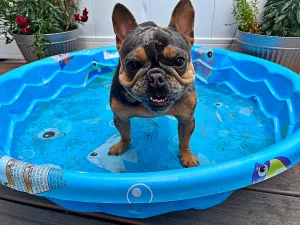

As summer heats up, there is something we all need to be aware of if you like to take your dogs swimming, and that is blue-green algae. Blue-green algae is deadly to dogs. You can identify it through “foam, scum, mats, or streaks” on the water, according to the Centers for Disease Control and Prevention (CDC). The algae produce one of the most powerful natural poisons known.
A tiny amount of the toxin – literally a few drops – can kill a dog. Dogs who ingest water containing blue-green algae while swimming, lick the water the water off themselves, or just take a quick lap of water can be poisoned. The algae can even be in water sources around your home.
Symptoms develop quickly, usually within 30 to 60 minutes and getting your dog to the vet immediately is imperative. What are the symptoms?
Black, tarry stools
Diarrhea
Difficulty breathing
Disorientation
Drooling
Elevated heart rate
Hives or rash
Jaundice
Muscle tremors
Pale mucous membranes
Seizures
Shock
Stumbling
Vomiting
Weakness
There are two toxins in blue-green algae, one that effects the liver and the other is their respiratory system. Liver failure happens quickly and emergency vet care is required to treat the dog. Most dogs will require IV fluids and plasma to help replenish electrolytes, regulate blood glucose, support organ function, and to prevent shock. Muscle relaxers and anti-seizure drugs are sometimes necessary, too. Sadly, the prognosis related to blue-green algae toxicity is poor.
How can you protect your dog? Be very careful where you let them swim. Fast moving water and cold water are your best bets. Stay away from swampy water or shallow stagnant water. Blue-green algae can appear like different colors on the water: green, blue, red, or brown. Some people say it looks like paint streaks. The body of water may look like thick green soup or be cloudy or swampy. The blooms may appear white, if at the end of the life cycle, although the toxins remain in the water for three weeks after the blooms are gone. Even more scary, the algae can be in water that looks clear.
And if you suspect your dog may have been exposed to blue-green algae, do not wait. Call your vet ASAP.






